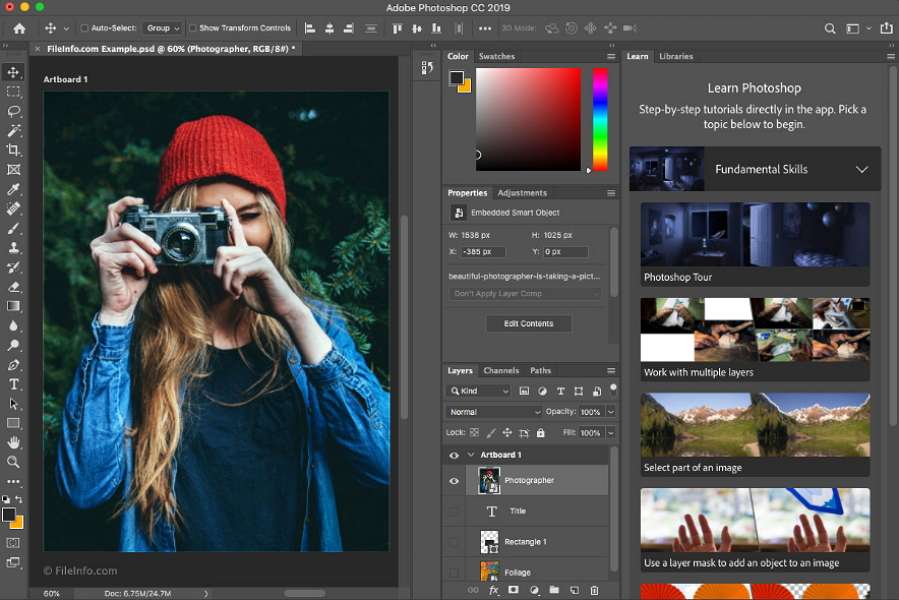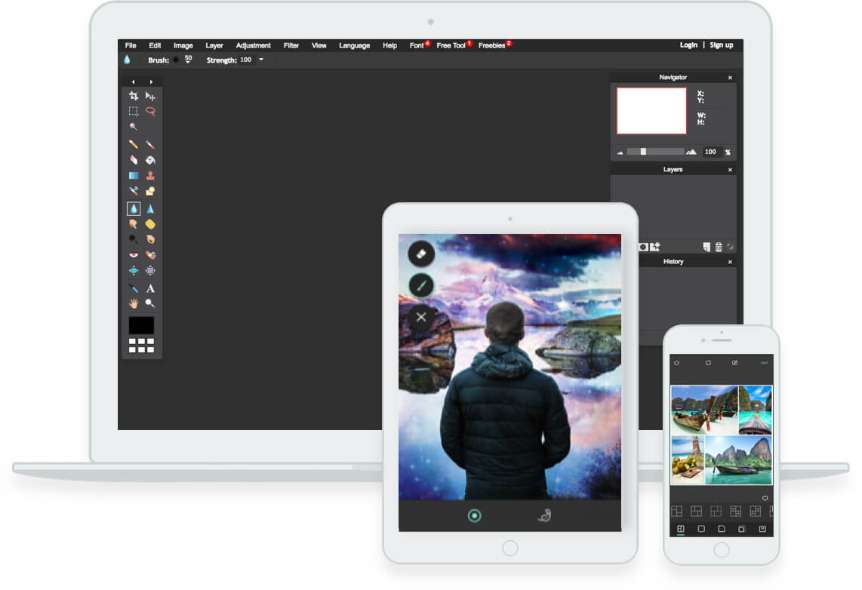Want to crop some of your holiday photos before showing them to your friends? You want to refine the rendering of a graphics creation for an artistic or professional project? Futura presents its selection of the best photo editing software.
Once reserved for professionals, photo editing software has become more popular in recent years. Nowadays, millions of amateurs are using digital tools to change the look of their photos to conform to their requirements. For beginners in this field, the question arises as to which solution to choose. That’s why Futura presents a selection of the best photo editing software.
Adobe Photoshop
Abode Photoshop is the photo editing software that is Kleenex handkerchiefs: the absolute reference. Indeed, as the brand of handkerchiefs, his job is so common that it has been gradually integrated into the language of everyday life.
You must have already heard someone say that he is going to “photoshop” an image, that is to say, to rework it. It must be said that Adobe Photoshop is currently the solution by far the most complete to edit its photos. Professionals have understood this since they use it almost all.
Both prevent: at first, the interface can discourage beginners who may feel a little lost. It takes a little courage and perseverance to master the program. But when we get there, the possibilities are really very interesting. The user navigates between the different panels and can activate the main tools in one click.
First, it has access to multiple settings for brightness, levels, curves, exposure, vibrancy, and more. It also has many settings to change the hues of colors and play with light pictures.
It can then use dozens of features related to layers and mergers. These features are often found in advanced photo editing software, but Adobe adds new features, refines details, and enhances the user experience. For example, since the last update, it is enough to fly over the various modes of fusion to see their effect instantly.
If he wants to work on vector images, he can use the pen tool to create plots (to add a logo for example). Here too, he has at his disposal a multitude of options for shape layers or vector masks. If he wants to draw freehand, he can use dozens of functions of the brush tool.
Adobe Photoshop also lets you perform common manual transform operations to move a layer, resize, or rotate it. Finally, Adobe Photoshop offers hundreds of possibilities for filters, whether simple or dynamic: attenuation, noise, distortion, pixilation, rendering, reinforcement, etc.
In terms of news, the latest version of the software embodies a “Symmetry” mode, a color wheel for easier color selection and a simplified “Export” menu, while rethinking the ergonomics of the work area. The only flaw in Adobe Photoshop is that there is no free version.
The user can nevertheless take advantage of the trial version of seven days to get an idea. If he is convinced, he can opt for a subscription.
The cheapest of them (at € 11.99 / month) is particularly interesting since it comes in the form of a package including Lightroom and Lightroom Classic (additional photo editing software Adobe Photoshop), but also offers online storage space of 20 GB.
Adobe Photoshop runs on Windows or macOS X.

Pixlr: a simple and online editor
We chose Pixlr for several reasons: it’s free, easy to use and fully online (compatible with all popular web browsers ). To use it, it’s very simple, just go to the publisher’s page and launch one of its two tools: Pixlr X or Pixlr Editor.
Pixlr X is really software for beginners. Its interface is in English but can be taken in hand in a few minutes. Pixlr X includes basic functions for editing and editing. It allows you to resize, rotate, invert, select portions to keep or delete, adjust saturation, contrast, brightness, exposure and play on shadows.
It also allows you to adjust the filters for sharpness, blur, grain, smoothing, or apply effects such as pixelation or mosaic. It also offers the ability to select an effect from a predefined palette (retro, colors, shades, etc.), add text or drawings, choose a border, or affix a sticker.
Pixlr Editor comes in the form of more classic editing software with the usual tool icons to the left of the work area: moving, selection, lasso, pencil, brush, eraser, stamp, etc. Just click on it to make the context menu of each tool appear above the photo.
The other main functions can be accessed via the menu bar at the top of the window: Layers, settings, and filters. An interesting point to note, because, unlike Pixlr X, the interface can be changed to French in two clicks. A final clarification is useful, Pixlr Editor displays advertising (this is not the case of Pixlr X), fortunately, it is not intrusive: it occupies only a small part of the screen and does not hinder at no time the user’s operations.
Pixlr also offers a Pro version that gives access to many PSD models and an editor with additional advanced features. Pixlr is also available on mobile on Android and iOS.
